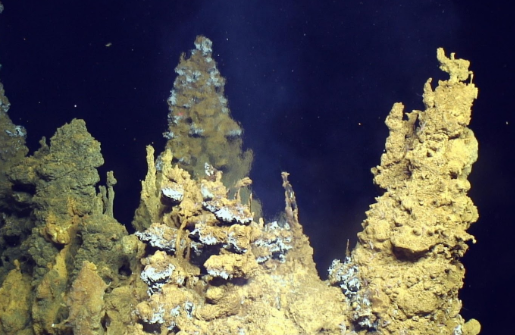Unusual Deep Sea Microbes Shed Light on Evolution of Early Life on Earth

Image Courtesy: pbs.org. Image for representational use only.
Single celled life called ‘archaea’ are known to be one of the earliest life forms to have evolved on the Earth. A new study has found a group of archaea that reside in the hot, oxygen-free fluids that flow through Earth’s crust in deep sea. The study also revealed that this class of microbes can obtain energy for sustenance of life by processing carbon monoxide and sulfate. This metabolic strategy, an overlooked and unusual one, holds clues to how early lives evolved.
This new class of microbes are named as Hydrothermachaeota. Due to their habitat in an extreme environment, they have never been cultivated in any laboratory for study. The research team from the Bigelow Laboratory for Ocean Sciences, University of Hawai’i at Manoa, US and the Department of Energy Joint Genome Institute, US, in their joint venture bypassed the problem of cultivation of microbes in lab with the tools of genomics, precisely by using genetic sequencing methods. Genetic sequencing techniques are used to decipher the sequences of genes in organisms that help in understanding the genetic realities of that organism. Only through this process they could find the metabolic process that Hydrothermachaeota uses to gather energy.
"The majority of life on Earth is microbial, and most microbes have never been cultivated," said Beth Orcutt, a senior research scientist at Bigelow Laboratory and one of the study's senior authors. She added, "These findings emphasise why single cell genomics are such important tools for discovering how a huge proportion of life functions."
In 2011, the team moved to the Juan de Fuca Ridge that is a mid ocean ridge off the coast of Washington. This is the region where two ocean plates are separating new oceanic crust. They used the deep diving robot ‘Jason’ to travel upto 2.6 km into the seafloor from where they collected the samples residing in the fluid flowing through the deep crust.
This is the first time that any microbes from the crustal fluid have been studied. From the genetic analysis of this microbe, they found that the organism has the ability to move on their own. The motility of this early life form offers it valuable survival strategy in the extreme environment where the resource for survival is extremely less.
"Studying these unique microbes can give us insights into both the history of Earth and the potential strategies of life on other planets," said Stephanie Carr, first author of the paper. "Their survival strategies make them incredibly versatile, and they play an important, overlooked role in the subsurface environments where they live," she further said.
These unusual microbes in an unusual environment have to be further researched on to decipher how they use the strategy of generating energy by processing carbon monoxide and sulfates. Finding out this would also pave the way for how evolution of this microbe took place. It is believed that this antique microbe holds clue to many unfound mysteries of early life.
Get the latest reports & analysis with people's perspective on Protests, movements & deep analytical videos, discussions of the current affairs in your Telegram app. Subscribe to NewsClick's Telegram channel & get Real-Time updates on stories, as they get published on our website.














